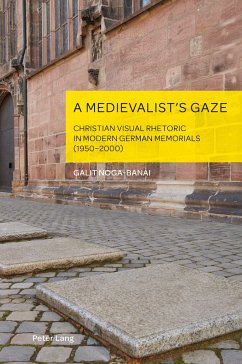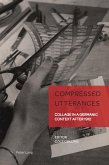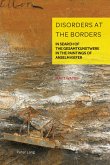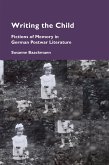«This book makes a strong case that memorials are embedded in local visual and historical traditions. While its comprehensive and detailed references make it a must-read for specialists, it will appeal not only to the many specialists working on memory and memorials, but also to general audiences interested in questions of visual culture and memorialization. Beautifully and engagingly written and illustrated.» (Professor Harold Marcuse, University of California, Santa Barbara)
This study offers an unconventional reading of modern and postmodern German memorials from a medievalist perspective. Beginning with a memorial for German soldiers in El Alamein and continuing with memorials for victims of the Nazis in Germany, the book challenges the visual differences between modern and medieval art and transforms the interactions between the two into six productive conversations. The examples discussed move from Christian themes or visual practice directly connected to medieval art in the surrounding local urban landscape, to secular or abstract projects that seem disconnected from premodern forms and formats. The wide variety of techniques, materials, iconography, layouts, and styles demonstrates that medievalism is a method of observation, one that can underscore the links between several works of art, offer a broader context, add layers of meaning, and explore relationships with nearby visual and social environments, physical and mental landscapes, conflicts and memories. The medieval association may also contribute to a project's potential to arouse empathy and to stand the test of time and distance from the events it is meant to recall. The book's medieval prism will afford the reader greater insight into these works of art and a better understanding of their contribution to modern and contemporary memory culture in Germany.
This study offers an unconventional reading of modern and postmodern German memorials from a medievalist perspective. Beginning with a memorial for German soldiers in El Alamein and continuing with memorials for victims of the Nazis in Germany, the book challenges the visual differences between modern and medieval art and transforms the interactions between the two into six productive conversations. The examples discussed move from Christian themes or visual practice directly connected to medieval art in the surrounding local urban landscape, to secular or abstract projects that seem disconnected from premodern forms and formats. The wide variety of techniques, materials, iconography, layouts, and styles demonstrates that medievalism is a method of observation, one that can underscore the links between several works of art, offer a broader context, add layers of meaning, and explore relationships with nearby visual and social environments, physical and mental landscapes, conflicts and memories. The medieval association may also contribute to a project's potential to arouse empathy and to stand the test of time and distance from the events it is meant to recall. The book's medieval prism will afford the reader greater insight into these works of art and a better understanding of their contribution to modern and contemporary memory culture in Germany.
«This book makes a strong case that memorials are embedded in local visual and historical traditions. While its comprehensive and detailed references make it a must-read for specialists, it will appeal not only to the many specialists working on memory and memorials, but also to general audiences interested in questions of visual culture and memorialization. Beautifully and engagingly written and illustrated.» (Professor Harold Marcuse, University of California, Santa Barbara)








